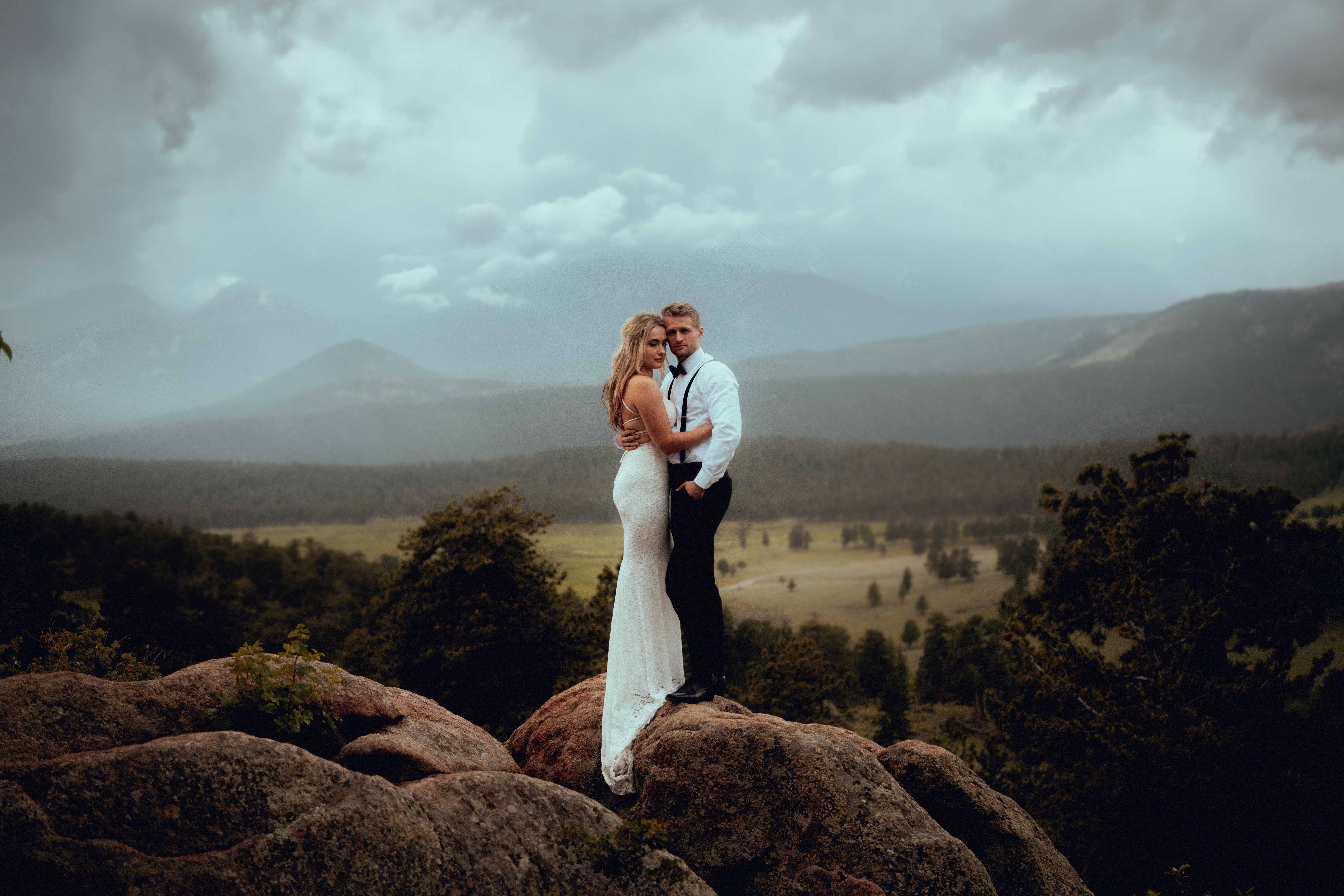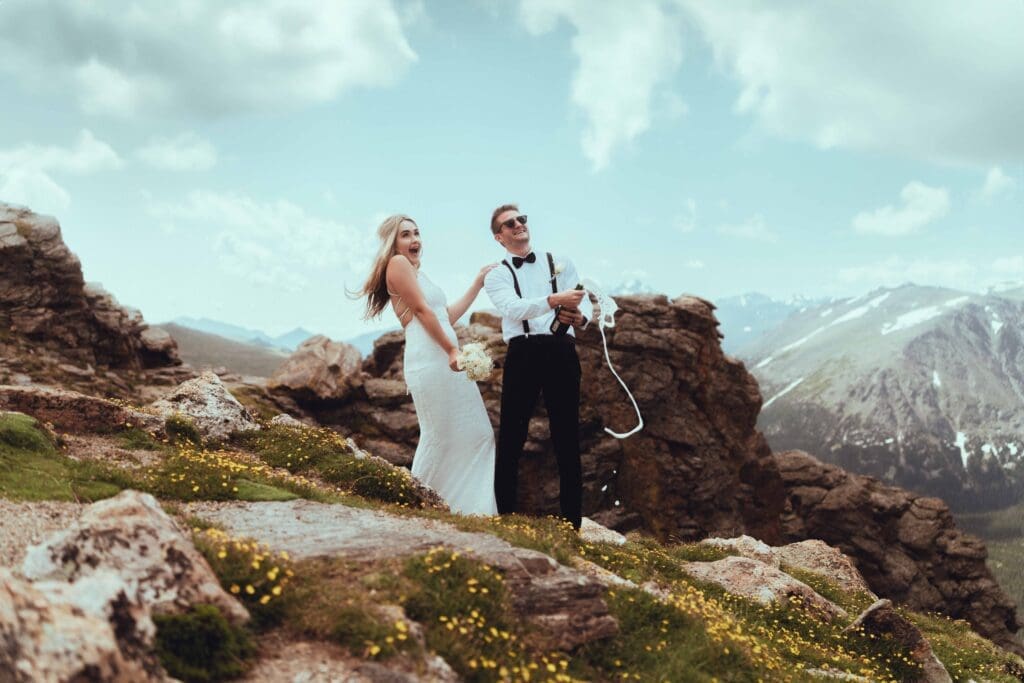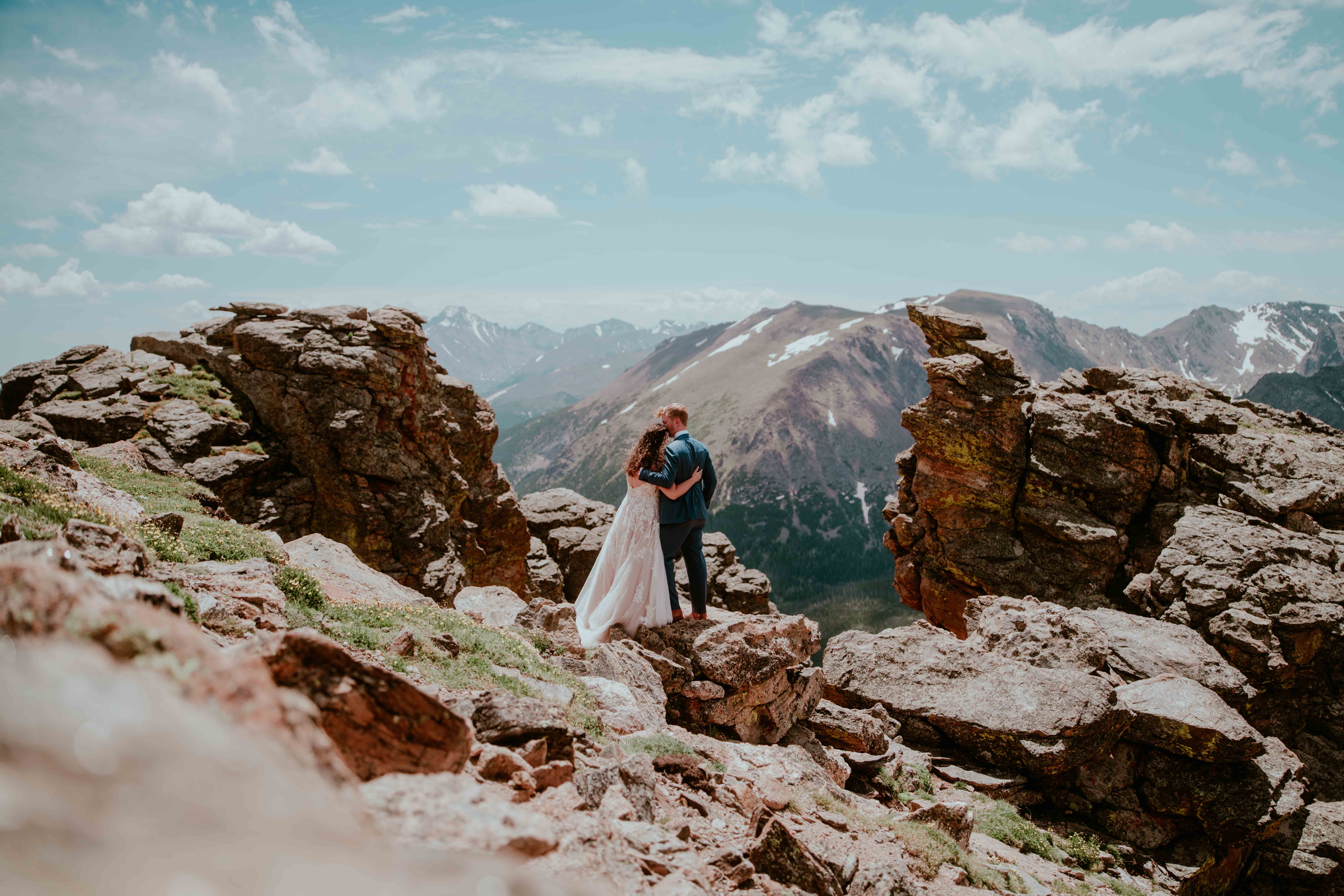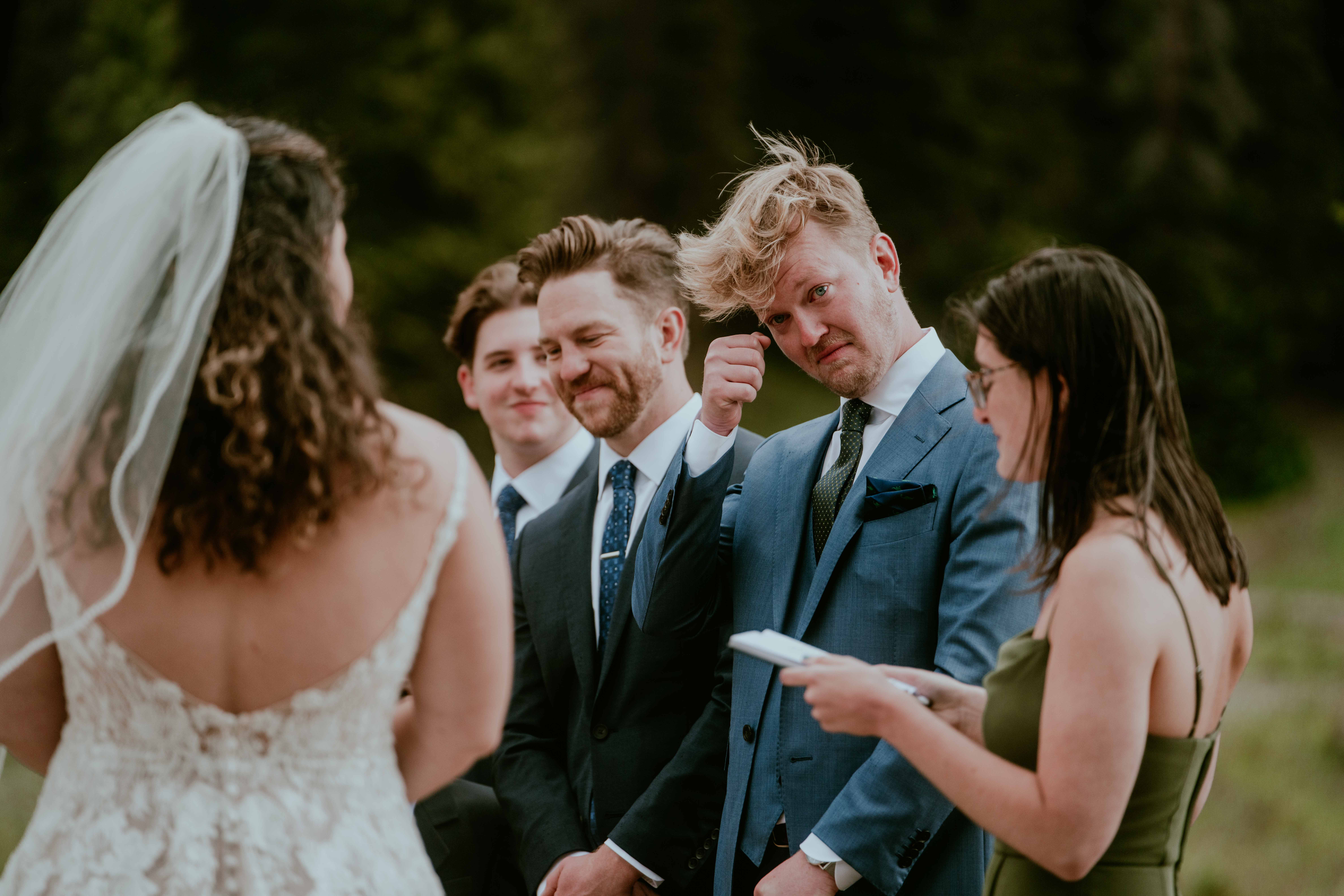Table of Contents
Introduction
Rocky Mountain National Park is one of the most scenic and popular destinations for elopements in Colorado. With its stunning mountain views, alpine lakes, wildflowers, and wildlife, it offers a variety of locations and experiences for couples who want to say “I do” in nature. However, eloping in Rocky Mountain National Park also requires some planning and preparation, especially since the park has implemented a timed entry permit system to manage the visitor flow. In this blog post, we will guide you through the steps and tips on how to elope in Rocky Mountain National Park in 2024, including:
- How much it costs to elope in Rocky Mountain National Park
- How to access the park and get around
- How to choose the best time and season to elope
- How to find the perfect eloping location in the park
- What to consider before and during your elopement
- How to get a permit for your elopement ceremony
- What hiking essentials to pack for your elopement adventure
- Where to get a marriage license in Colorado


Before/After: Sometimes we add a little bit of extra to pictures as a unique addition for clients
How Much Does It Cost to Elope in Rocky Mountain National Park?
The cost of eloping in Rocky Mountain National Park depends on several factors, such as the size of your elopement party, the services and vendors you hire, the accommodation and transportation you choose, and the activities you do. However, the main expenses that you need to consider are:
- The park entrance fee: $25 per vehicle or $15 per person for a 7-day pass, or $80 for an annual pass. You can also use the America the Beautiful Pass, which costs $80 and grants you access to all national parks and federal lands for a year.
- The timed entry permit: $2 per vehicle for a reservation to enter the park between May 24 and October 20, 2024. You need to book your permit online at recreation.gov in advance, as they are limited and sell out quickly. You can choose between two types of permits: one for the Bear Lake Road Corridor, which includes access to the rest of the park, and one for the rest of the park, which does not include access to the Bear Lake Road Corridor. The permit is valid for a two-hour window of entry, but you can stay in the park as long as you want.
- The wedding permit: $300 for a special use permit to hold your elopement ceremony at one of the designated locations in the park. You need to apply for this permit at least seven days before your elopement date, and you can do so online at the park’s website. The permit allows you to have up to 30 guests and two vehicles at your ceremony location, and it is valid for two hours. You also need to follow the park’s rules and regulations for weddings, such as not using any decorations, music, chairs, or arches, and leaving no trace of your event.
- The marriage license: $30 for a license to marry in Colorado, which you can obtain at any county clerk and recorder’s office in the state. You and your partner need to apply in person, show valid photo ID, and provide your social security numbers. You can also fill out an online application before you go to save time. The license is valid for 35 days after issuance, and you can use it anywhere in Colorado. You also need to have an officiant and a witness to sign your license after your ceremony, and return it to the county clerk within 63 days.
Other costs that you may incur for your elopement are:
- The officiant fee: This varies depending on the type and style of officiant you choose, but it can range from $100 to $500 or more. You can hire a professional officiant, a friend or family member who is ordained online, or even self-solemnize your marriage, which is legal in Colorado. You can find some officiant options at weddingwire.com or theknot.com.
- The photographer fee: This also depends on the experience and quality of the photographer you hire, but it can range from $500 to $3000 or more. You can find some photographers who specialize in elopements and adventure weddings at wanderingweddings.com or adventureinstead.com.
- The accommodation and transportation costs: These depend on where you stay and how you get to the park. You can choose from a variety of lodging options in the nearby towns of Estes Park and Grand Lake, or camp in one of the park’s campgrounds. You can also drive your own car, rent a car, or use a shuttle service to access the park. You can find some accommodation and transportation options at visitestespark.com or grandlakechamber.com.
How to Access the Park and Get Around
Rocky Mountain National Park is located about 90 minutes northwest of Denver, and it has four main entrances: Beaver Meadows, Fall River, Grand Lake, and Wild Basin. The closest airport to the park is Denver International Airport, which is about 75 miles away. You can rent a car at the airport, or use a shuttle service such as Estes Park Shuttle or Home James Transportation to get to the park.
Once you are in the park, you can use your own car, the park’s free shuttle buses, or your feet to get around. The park’s roads are well-maintained and scenic, but they can also be narrow, winding, and crowded, especially during peak season. The park’s shuttle buses run from late May to mid-October, and they can take you to some of the most popular trailheads and destinations in the park, such as Bear Lake, Glacier Gorge, and Moraine Park. You can find the shuttle routes and schedules at the park’s website. The park’s trails are also a great way to explore the park on foot, and they range from easy to strenuous, and from short to long. You can find the trail maps and descriptions at the park’s website or at any visitor center.


How to Choose the Best Time and Season to Elope
Rocky Mountain National Park is open year-round, but the best time and season to elope depends on your preferences and expectations. Each season has its own pros and cons, and you should consider the weather, the crowds, the scenery, and the activities when choosing your elopement date. Here is a brief overview of each season:
- Spring (March to May): Spring is a transitional season in the park, and it can be unpredictable and variable. You can expect snow, rain, wind, and sun, sometimes all in the same day. The temperatures can range from below freezing to above 60°F, and the higher elevations can remain snow-covered until June. The park is less crowded and less expensive in spring, but some roads, trails, and facilities may be closed or inaccessible. The scenery is also less colorful and vibrant, but you can still enjoy some wildflowers and wildlife. Spring is a good season to elope if you don’t mind the cold and the snow, and you want to avoid the crowds and the fees.
- Summer (June to August): Summer is the peak season in the park, and it can be busy and expensive. You can expect warm and sunny days, with temperatures ranging from 40°F to 80°F, but also afternoon thunderstorms, hail, and lightning. The park is fully open and accessible in summer, and you can enjoy the most activities and events, such as hiking, biking, fishing, camping, and ranger programs. The scenery is also the most beautiful and diverse, with green meadows, blue lakes, wildflowers, and wildlife. Summer is a good season to elope if you want to experience the best of the park, and you don’t mind the crowds and the costs.
- Fall (September to November): Fall is a shoulder season in the park, and it can be pleasant and peaceful. You can expect cool and crisp days, with temperatures ranging from 20°F to 60°F, but also snowstorms, especially in October and November. The park is less crowded and less expensive in fall, but some roads, trails, and facilities may close or reduce their hours. The scenery is also stunning and colorful, with golden aspens, red maples, and elk rutting. Fall is a good season to elope if you want to see the fall foliage and the elk, and you don’t mind the cold and the snow.
- Winter (December to February): Winter is the low season in the park, and it can be quiet and serene. You can expect cold and snowy days, with temperatures ranging from below zero to 40°F, but also sunny and clear skies. The park is mostly closed and inaccessible in winter, and you can only enjoy a few activities, such as snowshoeing, skiing, sledding, and ice fishing. The scenery is also simple and elegant, with white snow, blue skies, and evergreens. Winter is a good season to elope if you love the snow and the solitude, and you don’t mind the cold and the closures.

How to find the perfect eloping location in the park:
The park has over 400 square miles of land, and it offers a variety of locations and views for your elopement ceremony. You can choose from meadows, lakes, waterfalls, peaks, and forests, depending on your preference and accessibility. However, you need to follow the park’s rules and regulations for weddings, and only use one of the designated locations that require a special use permit. You can find the list of the locations and their descriptions at the [park’s website]. You can also check out some photos and reviews of the locations at [rockymountainbride.com] or [wanderingweddings.com]. Rocky Mountain National Park has many beautiful locations for your elopement ceremony, such as lakes, meadows, waterfalls, and mountain views. Some of the most popular spots are Sprague Lake, 3M Curve, Hidden Valley, Dream Lake, and Bear Lake. You can use the park map to explore the different areas and trails. You can also hire a local elopement photographer who knows the park well and can help you find the best location for your vision and preferences.
What to consider before and during your elopement:
Rocky Mountain National Park is a busy and popular destination, so you should plan to elope on a weekday to avoid crowds. You should also check the park website for any alerts, closures, or restrictions that may affect your elopement plans. The weather in the park can change quickly and vary by elevation, so you should dress in layers and be prepared for any conditions. You should also respect the wildlife and the environment by following the Leave No Trace principles.
What hiking essentials to pack for your elopement adventure
If you plan to hike to your elopement location or explore the park after your ceremony, you should pack some hiking essentials to make your adventure more comfortable and safe. Some of the items you should bring are:
- A backpack with water, snacks, sunscreen, insect repellent, first aid kit, and a map or GPS device.
- Comfortable hiking shoes or boots with good traction and ankle support.
- A jacket, hat, gloves, and extra socks in case of cold or wet weather.
- A camera, tripod, and extra batteries to capture your memories.
- A change of clothes or accessories if you want to switch up your look for photos.
Where to get a marriage license in Colorado
To make your elopement legal, you will need to get a marriage license in Colorado. You can apply for a license at any county clerk and recorder’s office in the state, but the closest one to Rocky Mountain National Park is in Estes Park. You will need to bring a valid photo ID, your social security numbers, and $30 in cash. You can find more information on the Larimer County website. You will also need to have an officiant and a witness for your ceremony, or you can self-solemnize your marriage in Colorado.
We are Adventure Theory, LLC.
We offer a unique and thrilling experience for those seeking travel tips, adventurous photography or elopements.
We are an experienced team of professionals, capturing stunning photos and providing personalized service for every client.
With a focus on adventure, we strive to create unforgettable moments that will last a lifetime.
Our travel blog provides tips and insights for exploring new destinations and experiencing new cultures.
At Adventure Theory Media, we believe that life is an adventure and we are excited to share that philosophy with you through our travel blog, and adventurous photography.







